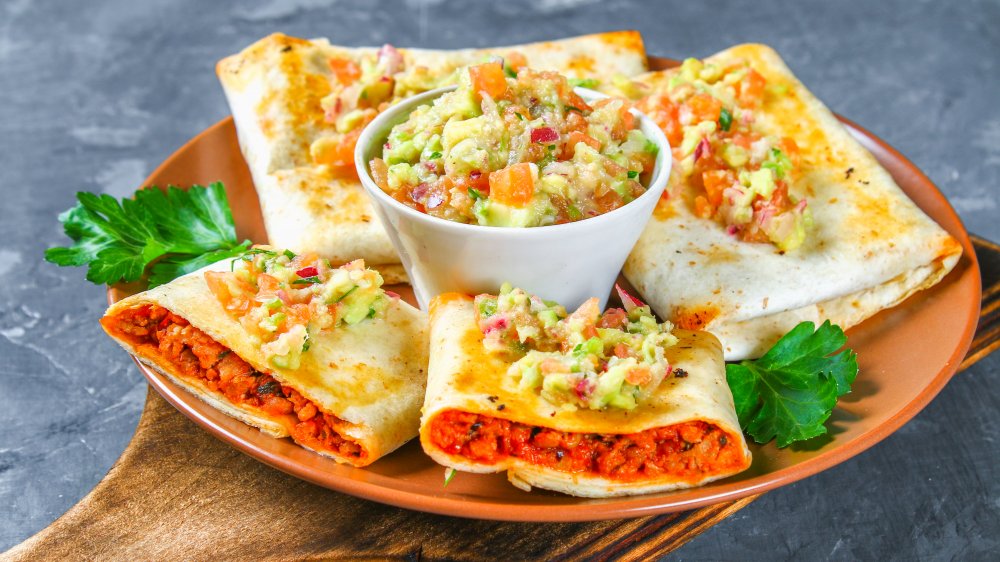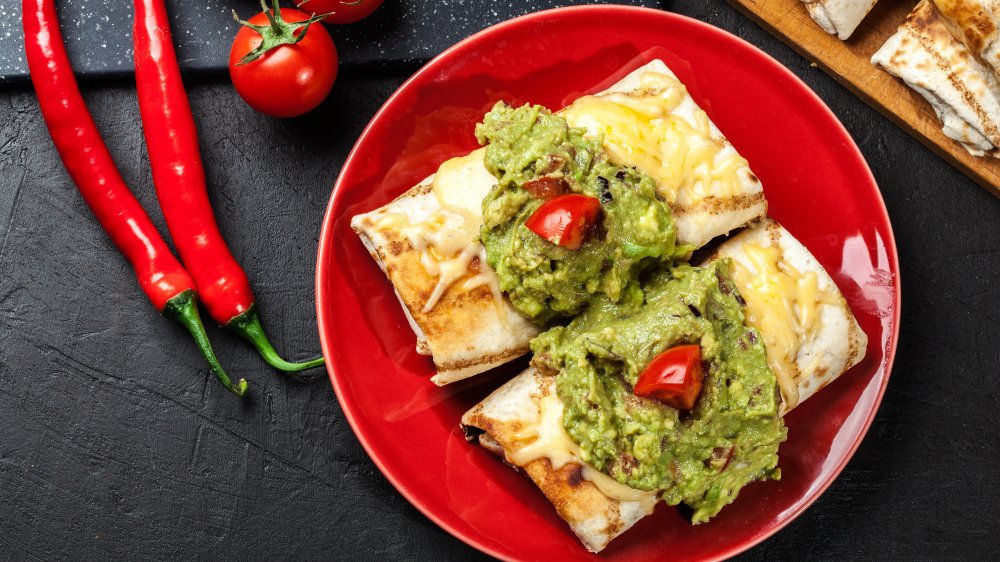How Chimichangas Really Got Their Name
Yes, chimichangas existed before a trigger-happy Ryan Reynolds, as superhero Deadpool, became so obsessed with them that Marvel came out with "Chimichanga Cologne" (via Geek Alerts). Interestingly, the great state of Arizona — and not the country of Mexico — fiercely claims credit for the deep-fried burrito.
If you believe Carlotta Flores, great-grand-niece of Monica Flin, chimichangas are they lucky result of a failed midnight snack (via The Los Angeles Times). As restaurant reviewer Rita Connelly tells it, Flin was rebellious, independent, and headstrong. The eldest of eight children, she emigrated with her father to Tuscon, Arizona from France. There, she dedicated herself to being undeniably ahead of her times. She hunted, fished, dated, married, divorced, spiked tea with tequila during prohibition (via Arizona Chimichangas), and opened the now-famous restaurant, El Charro Cafe, where she was simultaneously hostess, waitress, and chef (via El Charro Cafe).
According to Flores, Flin invented the chimichanga late at night, when preparing a midnight snack for her many nieces. When one of her nieces bumped into her, the bean burrito she was holding flew out of her hands and into a vat of hot oil. (Why had she heated up the hot oil, to begin with? We'll leave that to your imagination.)
In any case, Flin began to scream out a Mexican curse but changed it mid-word into "chimichanga" which is the Mexican equivalent of "thingamajig" (via Informacion Gastronomica and What's Cooking America).
It's the stuff of legend, to be sure. But it might be pure fairytale.
Are chimichangas really Chinese?
In Sonora, Mexico, you can order yourself a "chivichanga." Suspiciously similar to "chimichangas," "chivichangas" are fried, flour-tortilla quesadillas, stuffed with refried beans or meats, and smothered in guajillo sauce, or topped with mayonnaise and shredded cabbage (via Culinary Backstreets and Tuscon). And if you choose to believe biologist and ethnologist, Tom Van Devender, you can thank the existence of "chivichangas" to cross-cultural love affairs.
The story goes something like this. An impressive 60,000 Chinese migrated to Mexico during the late 1800s and early 1900s, possibly as a way to illicitly enter the United States (via The University of Arizona Press). As people are bound to do, the Chinese laborers fell in love and got married. If Devender's version is correct, their Mexican wives attempted to make egg rolls for them, and the "chivichanga" was born. How did they get the name "chivichanga"? Most likely, the name is a result of Mexicans trying to pronounce the Chinese word.
Which version is true? Pick the story you like the most. Either way, we sure are glad that they exist.

